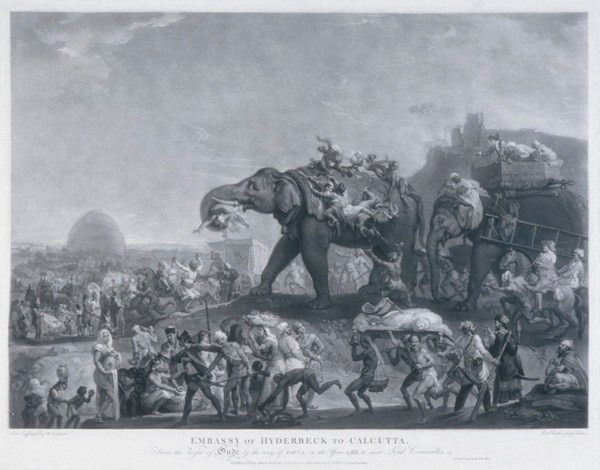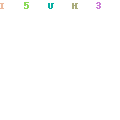A walk down Beckbagan in south Kolkata would make it difficult to believe that this neighbourhood ever had its origins in a garden. Its main thoroughfare — Beckbagan Row — cuts through one of the main markets of south Kolkata, also called Park Circus market or ‘Dhanger bazaar’ by locals and shopkeepers.
In his book ‘A History of Calcutta’s Streets’, historian P. Thankappan Nair writes that the neighbourhood finds mention in old maps from the 1800s, making it among the oldest neighbourhoods in the city. Two of these maps include the ‘Plan of the city of Calcutta and environs’, surveyed in 1832 by Major J.A. Schalch and James Prinsep’s surveys of the city in 1825.
Nair writes that Schalch’s maps, which refer to the area as ‘Beck Saheb ka Bageecha’, were used by the Lottery Committee. Other old street directories of the city refer to this neighbourhood as ‘Baig Bagan Lane’.
While it is not clear who decided to name a street in Calcutta after the individual, Nair believes that it is likely that Beckbagan was named after Haider Beg Khan, a minister in the court of Nawab Asaf-ud-Daula of Awadh.
Subscriber Only Stories
Portrait of Hyder Beg Khan (Source: Wikipedia)
A painting from the 1800s by German artist Johann Zoffany, who was actively working in the Indian subcontinent during that time, depicts an embassy of the Nawab, led by Khan, passing through Patna on its way to Calcutta in 1786 to meet Lord Cornwallis, who had become the new Governor-General of India. The purpose of Khan’s visit was primarily to negotiate a reduction in contributions paid to the East India Company by the Nawab of Awadh.
That painting, titled ‘The Embassy of Hyderbeck to Calcutta’, is available for viewing at the Victoria Memorial in Kolkata. Records of the museum explain how Zoffany created the piece: In September 1786, Zoffany was travelling to Delhi and Agra, and other cities and towns in present-day Uttar Pradesh. On his way back to Calcutta, Zoffany and his companions met with Haider Beg Khan and his entourage travelling in the same direction to meet Cornwallis.
 (Source: artcollection.culture.gov.uk)
(Source: artcollection.culture.gov.uk)
The museum records speculate that the iconic painting was a result of this chance meeting, and was produced in a style of painting that Zoffany particularly enjoyed.
Advertisement
Several editions of the Calcutta Gazette from 1787 mention Khan’s departure from Awadh and the preparations that the British government officials made in Calcutta. The February 1787 edition of the Gazette states: “We understand that Hyder Beg Khan may be expected in Calcutta in the course of this week, Mr. Barwell’s house, lately occupied by Mr. Galdwin, is taken for his reception.”
While it is not clear about the position that Galdwin occupied in the government, Barwell appears to have occupied a senior position in the British East India Company, based in Calcutta. In his book ‘Oudh and the East India Company (1785-1801)’, Purnendu Basu provides an exhaustive account of the dealings between the the Nawab of Awadh and the British East India Company.
Basu writes that Asaf-ud-Daula “left all power and authority” in the hands of Khan. Hence, it should not come as a surprise that Khan was dispatched to meet Cornwallis on behalf of the Nawab. Basu’s writings indicate that both Warren Hastings and Cornwallis had recognised Khan’s intelligence and capabilities and that the emissary from Awadh was held in some regard among officials of the British East India Company and the government in Bengal.
Advertisement
Haider Beg died in June 1792, some six years after Cornwallis first met Khan. The question of Khan’s replacement arose among Company officials, but it appears to have been a difficult one. The Company contemplated filling up Khan’s appointment with his rival Almas, also a minister in the Nawab of Awadh’s court.
Basu quotes a dispatch by Cornwallis addressing the question: “Considering the character of Almas, and the general tenor of his conduct as a subject of the Wazir’s government, he would have been a very improper person to fill the station that was held in it by Haider Beg”.
Hence it shouldn’t come as a surprise that the British decided to dedicate one of the oldest streets in Calcutta after a minister they held in such high regard. Nair writes that Khan was commonly addressed as ‘Baig Shahib’ from where the name ‘Beck Bagan’ originates.
The name ‘Beck Saheb ka Bageecha’ mentioned in Schalch’s maps may indicate that the house that Khan was residing in may have been one of the larger colonial style garden homes that were commonplace in Calcutta at that time, usually reserved for dignitaries, royalty and high-ranking officials of the British East India Company. ‘Beck Bagan’ may have been a shortened form of ‘Beck Shahib’s garden house’, with ‘bagan’ being the Bengali term for ‘garden’.
Today, the Beck Bagan area is largely a marketplace, with some older, crumbling colonial era buildings having been converted and subdivided into residences for multiple families. One of the grandest structures sit in the center of Beck Bagan Row, in a state of appalling disrepair, but there is no indication of who originally owned the building or its early occupants.
Advertisement
Neither is there any mention or sign of Baig Shahib or even his bageecha, anywhere other than the street’s name itself. The shopkeepers in the marketplace and their customers are too busy to care.
Source: https://indianexpress.com/article/cities/kolkata/streetwise-kolkata-beckbagan-named-emissary-awadh-respected-british-8080572/

